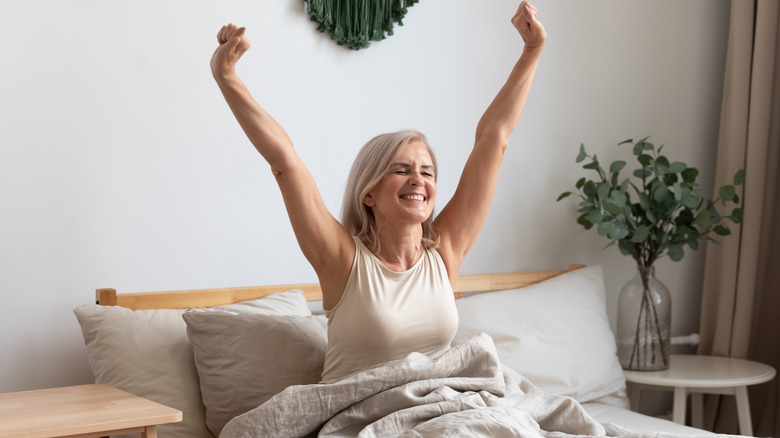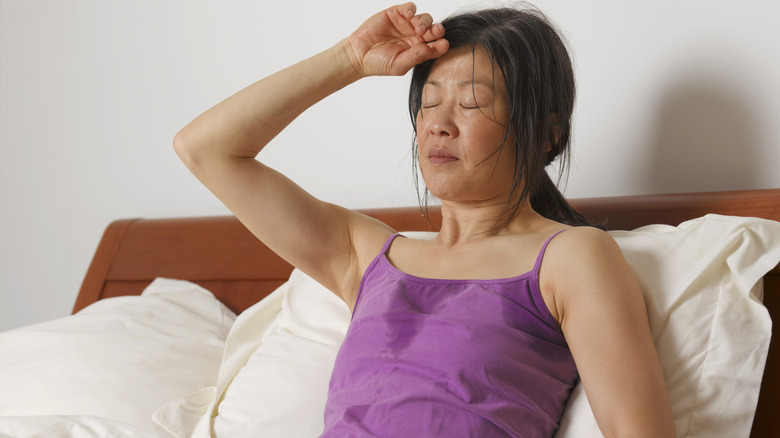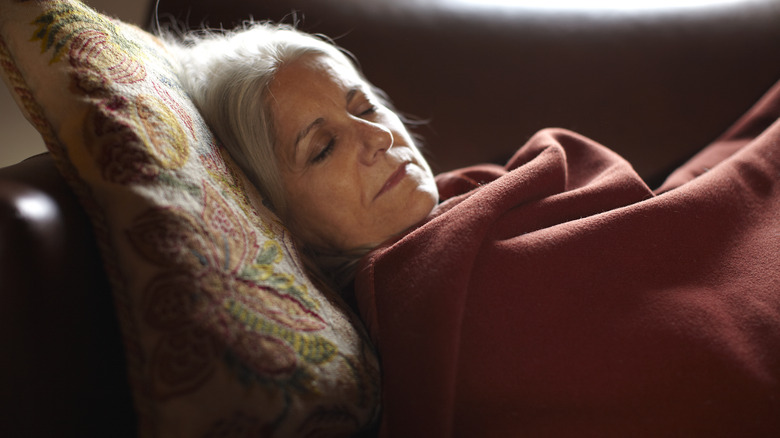Why The Eight Sleep Pod Could Improve Sleep Troubles For Adults Over 50
Women shifting into menopause know the treachery of night sweats. Once they drift into a blissful slumber, suddenly their bodies are awakened by an internal combustion. People who've been great sleepers all their lives might find it more difficult to get to sleep and stay asleep once they're about 50. Older adults also get up more often during the night, sometimes needing to pee.
Sleep technology has changed in the past few decades to help improve your sleep quality. High-tech mattress covers like the Eight Sleep Pod automatically cool (or heat) your bed to ensure you have the most comfortable sleeping temperature to optimize your time in bed. The mattress pad has coils inside that pump water at your selected temperature. The water tank sits next to your bed, and you can change the temperature of your mattress pad using a remote control.
The temperature of your bed, comforter, pajamas, and bedroom can help your body find the optimal temperature to improve the quality of your sleep, according to a 2024 review in Energy and Built Environment. You're more likely to wake up during REM sleep if the temperature of your bedroom environment is uncomfortable, particularly if it's warm. Cooling systems like the Eight Sleep Pod might help people over 50 improve their sleep, but they might not be as effective as they age.
Bed cooling systems might be great for menopausal women
Women experiencing hot flashes might enjoy sleeping with a cooling system like the Eight Sleep Pod. A 2022 study in Menopause tested how a similar cooling system, the Chilipad by Sleepme, might help 15 menopausal women sleep better. Just using the Chilipad by Sleepme for a week reduced the number of nighttime and daytime hot flashes, but the women continued to experience 50% fewer hot flashes after 8 weeks. They also experienced fewer sleep disturbances. The researchers believed that the women had fewer hot flashes during the day because they slept better at night.
Although the Eight Sleep Pod wasn't tested in menopausal women, a 2024 study in Bioengineering had 54 healthy younger adults (average age of 36) test the Sleep Pod for a week, with four nights using the temperature control. Cool mattress temperatures at bedtime allowed men to fall asleep faster and subsequently get more deep sleep, but they also had less REM and light sleep. Women who had cooler temperatures at bedtime had more REM sleep.
Your heart rate is supposed to dip during a good night's sleep, while your heart rate variability should increase. Their average sleeping heart rate was 1.2 beats per minute lower, and their heart rate variability was 2 milliseconds higher while sleeping on the Sleep Pod.
Older adults need warmer environments
The Eight Sleep Pod and Chilipad by Sleepme not only cool your bed, but also warm it. For older adults, a warmer sleeping environment might be better because the body has a tougher time regulating its core temperature. A 2020 study in Energy and Buildings found that a warm mattress and a warm blanket helped older adults (average age was 66) sleep longer and get to sleep faster, with the warm blanket doing a little better to improve sleep. The warm blanket also lowered people's blood pressure in the morning.
However, warming or cooling the body using blankets, mattress-cooling technology, or socks might not help older adults with insomnia. According to a 2007 study in Physiology and Behavior, wearing warmed or normal-temperature bed socks helped adults fall asleep faster. For older adults, a warm foot bath before bed or wearing bed socks at bedtime helped them fall asleep. Yet for older adults with insomnia, none of these treatments worked.
There are also differences in the sleeping environment in older adults. The Sleep Foundation suggests setting your thermostat to temperatures between 65 and 68 degrees Fahrenheit for optimal sleep. Older adults might need to sleep in a little warmer temperatures, but not too warm, according to a 2023 study in Science of the Total Environment. Temperatures between 68 and 77 degrees Fahrenheit supported sleep the most, but when temperatures rose higher than that, their sleep was disrupted.


